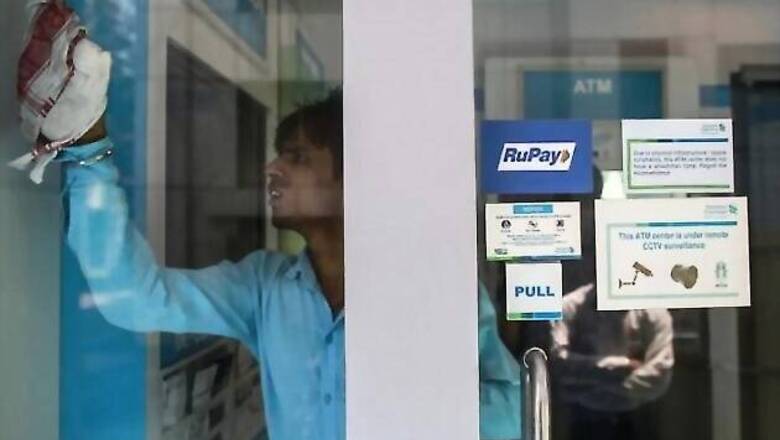
views
Mumbai: Indian banks, hoping to offset a slow recovery in corporate lending, are pushing into credit cards and personal loans, using blanket advertising, cold call campaigns and even sending employees to malls to lure customers.
Lending to companies has traditionally been the mainstay for banks in Asia's third-largest economy. But as India emerges from two years of slower economic growth, those loans are sour, large investment projects are stalled and company profits lacklustre.
Meanwhile, retail borrowers have escaped largely unscathed, with income levels still growing, albeit at a slower pace, and no large-scale job losses.
The current push is the boldest since before the 2008 financial crisis, with some lenders aiming to increase loan books annually by a third or more, capitalising on Indians' growing appetite for luxuries like holidays abroad.
And it is easy to see why, given the high margins and huge growth potential. India's 20 million credit cards -- for a population of 1.3 billion -- amount to just 0.5% of total outstanding bank credit. Unsecured personal loans make up just under 4% of all loans.
"For the industry as a whole, since a couple of years ago we've seen a slowdown in corporate (lending). So there is a genuine push towards the consumer lending space," said Sumit Bali, a senior executive vice president at Kotak Mahindra Bank Ltd.
While home loans continue to make up about half of consumer loans, Bali said there was an "increasing appetite" for credit cards and unsecured lending, with Kotak aiming for up to 35% and 45% growth, respectively.
Axis Bank Ltd has already increased the share of unsecured loans to 9% of its retail arm from 6%, retail lending head Jairam Sridharan said. He aims to increase that to 15% in three years.
Housing loans, he says, are stable and less risky -- but returns are also lower.
"We'd like to balance that out," Sridharan said.
Wiping out
RBL Bank, a small private sector lender, acquired RBS' Indian credit cards business in 2013 and is growing aggressively, using cards to lure in new clients. Unlike big banks who issue cards mostly to existing customers, for RBL, up to four-fifths of cards are for new clients.
But with that comes risks.
"If an unsecured portfolio goes bad, then it can wipe out your profits pretty fast which is what most of the people saw when it happened (after the financial crisis)," said Harjeet Toor, head of retail assets and small business lending at RBL.
Currently, across the industry, 3 to 5% of credit card loans and 2 to 3% of personal loans go bad -- mostly below the sector's overall bad loans ratio of 4.5%.
But that could grow, even with credit bureaus which banks say now cover more than 40% of rural applicants.
Many Indians have no credit history: millions have never borrowed from a bank, and own phones that are prepaid.
Most transactions are done in cash, or with one of India's 500 million debit cards -- a number boosted by government efforts to improve access to financial services.
Soubhik Mukherjee, a 29-year-old marketing professional in Delhi, said he had resisted credit card offers but yielded ahead of a visit to Thailand in February, his first trip abroad.
"My bank told me at the last minute that my debit card will not work everywhere in Thailand," he said, adding that getting the credit card had been "surprisingly easy".
"I hope not to abuse it."


















Comments
0 comment